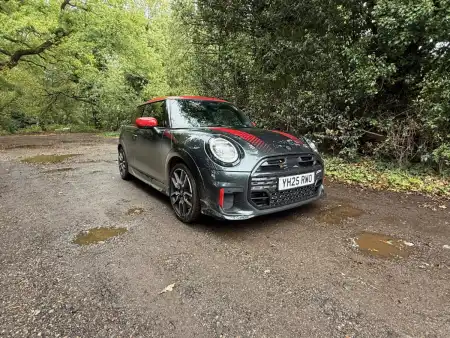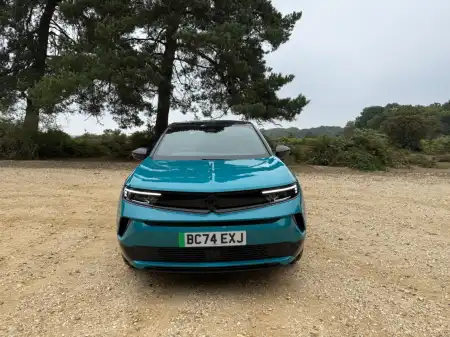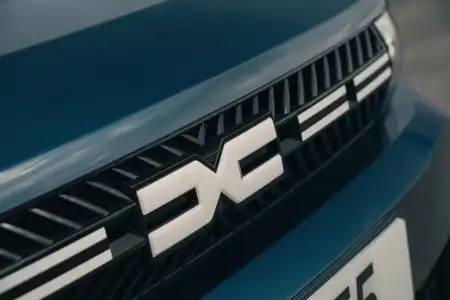- Best in class fuel economy
- Distinctly upmarket interior
- Smart and sensible exterior
- Diesel engines tend to roar
- Parking sensors easily confused
- Rear visibility isn’t the best
Introduction
The Qashqai first entered showrooms back in 2007 and was the spark that ignited the compact-SUV segment. Blending the running costs and of a hatchback with the aesthetics and road-presence of a 4x4. Countless manufacturers have followed suit since then, but few have come close to offering a package as comprehensive as that of the Qashqai. We borrowed the latest model for a week to test it out in real world circumstances. Will it live up to the hype that settled the Qashqai as the 5th best-selling car in the UK in 2015, ahead of the Polo, Astra and MINI? Read on to find out...
On The Road
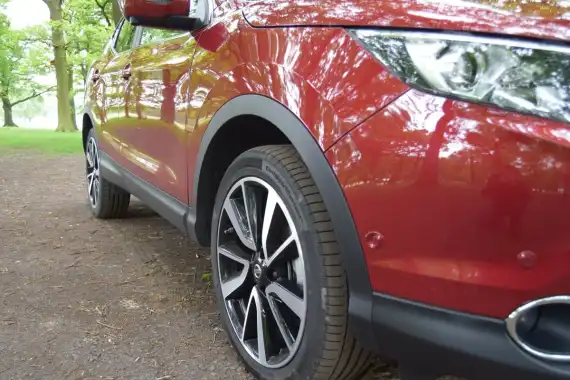
Performance
We were out in the 1.6 diesel model which packs a modest 130bhp, although it certainly feels like more. Traditional 1.6 diesel units would struggle to haul a car of this stature but the clever turbocharger offered plenty of grunt and the Qashqai was genuinely impressive when you wanted to get a move on.
The 1.5dCi unit is the more popular choice, which offers 110bhp - the same engine you’ll find in the Renault Megane, Renault Laguna and Nissan Cube. A similar, but slightly altered engine to that in the more up-market Mercedes Benz A-Class, B-Class and CLA-Class. It’s a very popular engine, is what we’re getting at, and for good reason. Overtaking isn’t a chore and the turbo pulls smoothly when accelerating from the lights. The Qashqai feels comfortable all the way up to the motorway speed limits and is genuinely a pleasure to drive on long journeys. Some may be sceptical buying a car this size with a 1.6 litre engine, but we can assure you, it is plenty, so is the 1.5.
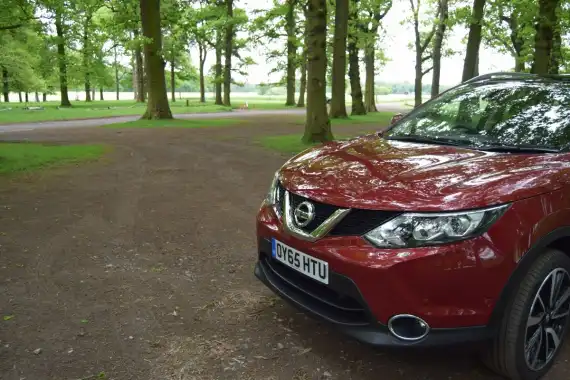
Ride Handling
The Qashqai was built in Sunderland, and it certainly feels like a car created with our crumbling british roads in mind. As you’d expect of a car this size, it comfortably takes the hit out of potholes and has fantastic levels of grip through the bend, out really feels planted and secure even in wet conditions.
Handling is also impressive for a car of this stature. You’d expect an SUV at this height to feel numb and the steering to feel disconnected, but you get a nice amount of feedback through the wheel and the car is easy to predict when negotiating tricky bends. Similarly a car with raised suspension like the Qashqai would be forgiven for suffering body-roll in the bends but Nissan have done well to downplay this. It is still there, but it’s not hugely intrusive to the experience and doesn’t discourage you.
It’s actually very fun and easy to drive, the Qashqai really doesn’t feel like a big car once you’re behind the wheel.
Styling
Build quality is good, material choice is good (especially in the top-spec Tekna we had) and everything is quaint in the cabin of the Qashqai, we’re happy to report. It really is a pleasant place to be, even in the diesel models the engine noise isn’t too prominent, there’s not too much wind noise from the mirrors either and we could happily make ourselves at home in the Qashqai for long and short journeys alike.
Often with diesel vehicles in this sector, you expect the pedals and gear stick to vibrate nervously when you put your foot down, but not at all in the new Qashqai. It’s put together very well. Our only quirk would be that the juddering which occurs when you’re in too high-a-gear makes an unsettling vibration, but that’s your own fault, you’re in the wrong gear
In The Car
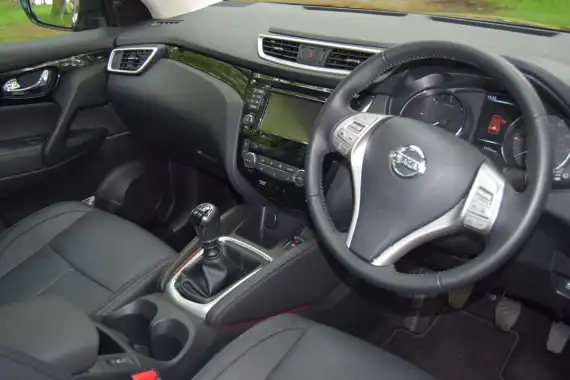
Behind the Wheel
The driver’s seat in the Qashqai is a lovely place to be. You’ve got a nice wide footwell, an intuitive centre console within arms reach and you’re perched in a large arm chair which envelops you into the car. Visibility is good too, with a deep and wide front windscreen and expansive windows all round. The little blind spot that does exist is then assisted with the blind spot detection system. This is a light on the inside of the car next to the mirror which turns on when a car is in your blind spot, the car then beeps if you start indicating while a car is in your blindspot - preventing an accident.
There are some odd inconsistencies though in the trim levels. For example, every model is given hill-start assist, bluetooth and smartphone connectivity - but not DAB radio? It seems odd that they’d sooner offer you a common optional extra, bluetooth, than a common standard feature in new cars these days.
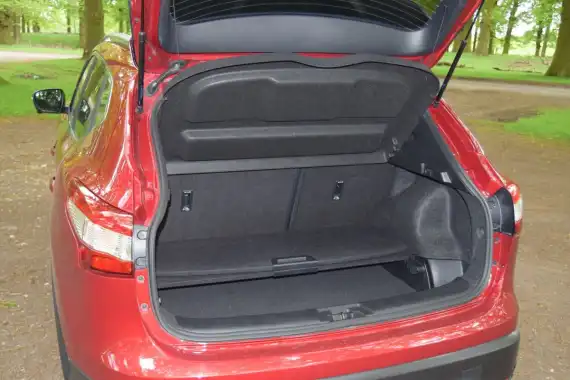
Space & Practicality
Although the exterior may make the Qashqai seem huge and imposing, the reality is it’s not massive. The car is 4,377mm long and 2,070mm wide - only 50mm wider than a Volkswagen Golf. The Qashqai does sit nice and lofty though, at 1,590mm from the tarmac - this makes getting in and out of the car a breeze, you can step into the Qashqai instead of dropping into it, which is why the Qashqai has proved so popular on the motability scheme in previous years.
Boot space is good too. You get a full 430 litres of luggage capacity with the seats in place, which isn’t quite as good as the likes of the Peugeot 3008 but is still plenty, then when you fold the rear seats down this extends to a massive 1,585 litres of space which is big enough for just about anything you’d reasonably consider taking in a car this size.
Ownership
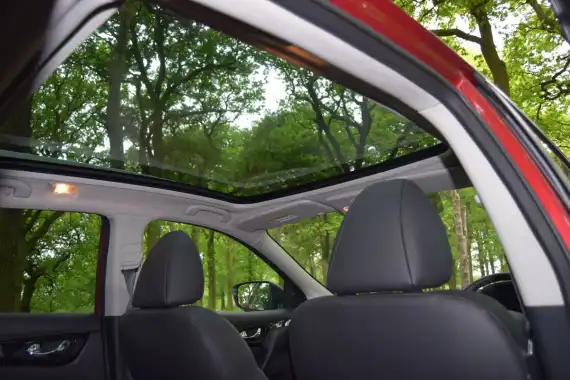
Running Costs
As mentioned we were given the slightly more powerful 1.6dCi version to play with for a week. This is an impressively economical car, offering 58mpg, but there’s one better, the 1.5dCi. The 1.5 model offers up to 74mpg, exceeding the most economical 3008 (excluding the hybrid), Tiguan and Kuga. So if you spend a lot of time on motorways the Qashqai will be the most economical choice for you.
Both are affordable to tax, The 1.5dCi is actually free under current rates as there are only 99g/km of CO2 emitted from the exhaust, whereas the 1.6dCi puts out 116g/km of CO2 and therefore costs £30 a year to tax - still not horrific.
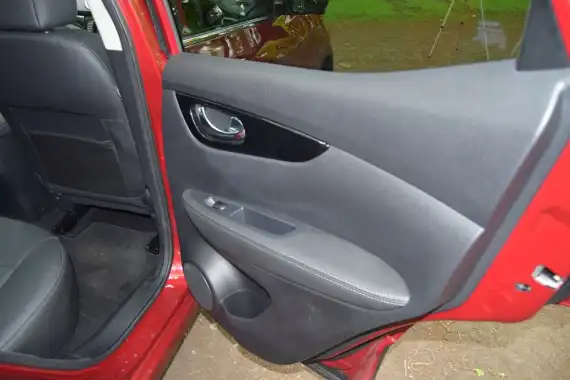
Quality & Reliability
Nissan have a well established history of building solid, reliable cars that seem to last forever. This is still true with the Qashqai. The 1.5 dCi engine has received praise in pretty much every car it has been placed in, which is a lot. Mercedes, Renault, Nissan vehicles and many more.
The interior feels very well put together and the soft-touch materials really do add a lot to the atmosphere inside the cabin. The Qashqai offers a notably more upmarket environment than it’s closest competitors.
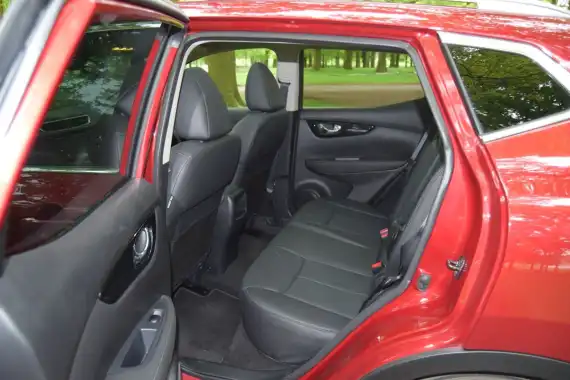
Safety & Security
As expected, the Qashqai got a full 5 star safety rating on the Euro NCAP safety test - a priority for family buyers. Scoring 88% and 83% for adult and child occupant safety respectively. Our model had loads of extra safety kit that we loved. Blind spot warning lights worked brilliantly, the front and rear parking sensors were helpful too, although they did get a bit confused in traffic, but best of all was the 360 degree cameras which offered a birds-eye-view of the car on the centrally mounted 7” touch screen.

